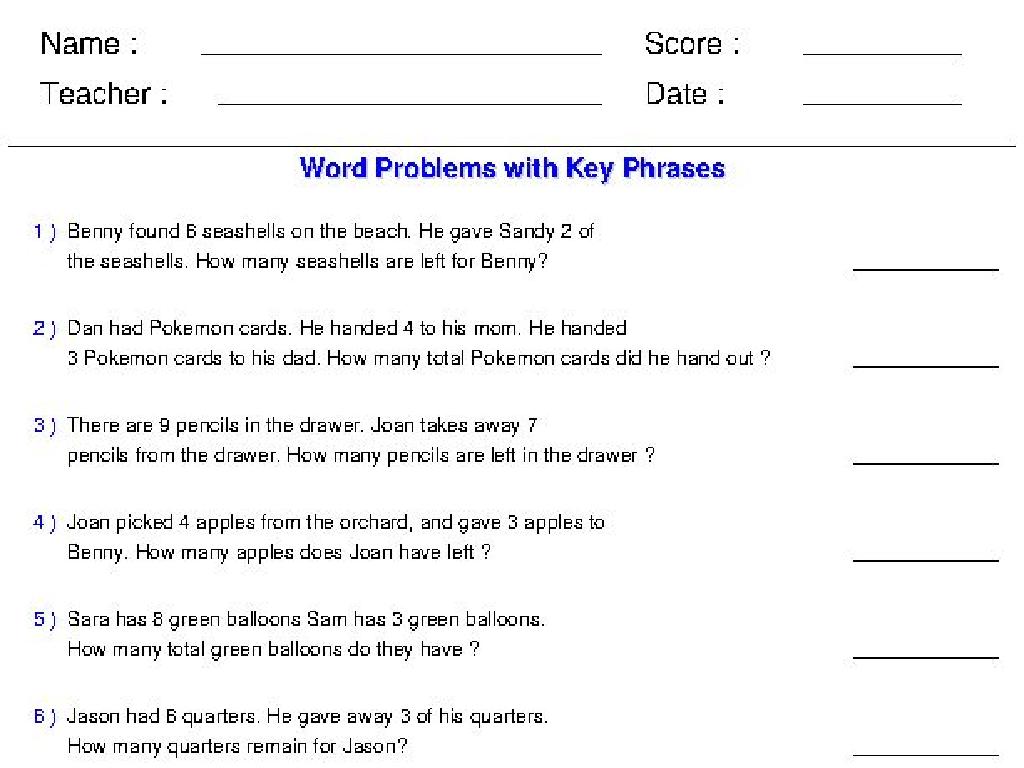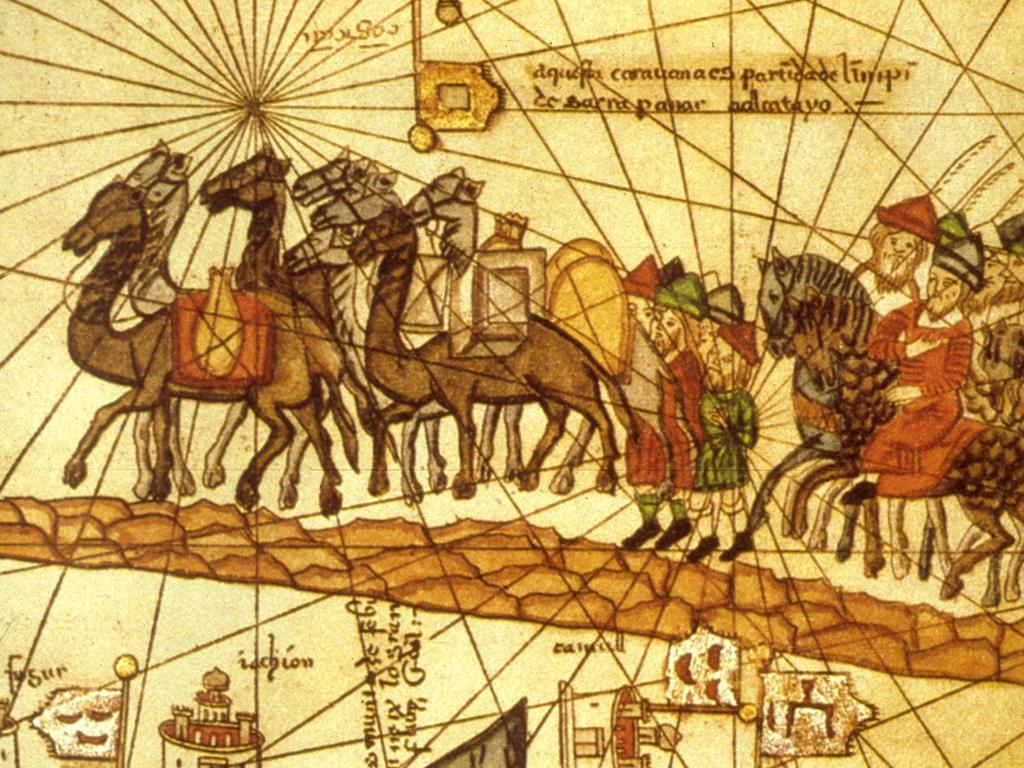Abbreviate Street Names And State Names: Review
Subject: Language arts
Grade: Fourth grade
Topic: Abbreviations
Please LOG IN to download the presentation. Access is available to registered users only.
View More Content
Abbreviating Street & State Names
– What are abbreviations?
– Shortened forms of words or phrases
– Why use abbreviations?
– Saves time & space, especially in addresses
– Abbreviate street names
– St. for Street, Ave. for Avenue
– Abbreviate state names
– CA for California, NY for New York
|
This slide introduces students to the concept of abbreviations, with a focus on street and state names. Begin by explaining that abbreviations are shorter versions of words or phrases that make writing and reading quicker and easier. Discuss why abbreviations are particularly useful in addresses, saving space and time. Provide examples of common street name abbreviations, such as ‘Rd.’ for Road and ‘Blvd.’ for Boulevard. Then, move on to state name abbreviations, like ‘TX’ for Texas and ‘FL’ for Florida. Encourage students to think of other examples and explain that they will often see these abbreviations on envelopes, maps, and in travel brochures. The goal is for students to become familiar with these abbreviations so they can recognize and use them correctly in their own writing.
Understanding Abbreviations
– What is an abbreviation?
– A shortened form of a word or phrase.
– Common abbreviation examples
– Dr. (Doctor), St. (Street), Jan. (January)
– Abbreviation vs. acronym
– Abbreviations are short forms, acronyms form new words.
– Practice with street & state names
|
Begin the lesson by defining an abbreviation as a shorter way to write a word or phrase, which helps in saving space and time in writing. Provide students with everyday examples, such as abbreviations for titles, street names, and months. Clarify the difference between an abbreviation and an acronym, noting that acronyms form new words from the first letters of a series of words, like NASA or SCUBA, while abbreviations are just a truncation of a single word. Then, move on to practice abbreviating street and state names, which is a practical skill for addressing letters and understanding addresses. Encourage students to come up with their own examples and to recognize these abbreviations in their daily lives.
The Power of Abbreviations: Street & State Names
– Abbreviations save time
– They make reading & writing faster
– Common in addresses & navigation
– Think ‘St.’ for Street, ‘Dr.’ for Drive
– Practice abbreviating correctly
– Let’s learn to abbreviate states like ‘CA’ for California, ‘NY’ for New York
|
Abbreviations are shortened forms of words or phrases. They are essential because they save time and space, especially when writing addresses or navigating maps. It’s important for students to become familiar with common abbreviations for street and state names as they will encounter and use them regularly. During the lesson, provide examples of commonly used abbreviations and have students practice by writing out full addresses and then converting them into abbreviated forms. Encourage them to think about the reasons why abbreviations are helpful and to recognize them in their daily lives, such as on road signs or when using GPS navigation.
Abbreviating Street Names
– Common street abbreviations
– St. for Street, Ave. for Avenue, Blvd. for Boulevard
– Activity: Match abbreviations
– Pair up street types like Road, Circle with Rd., Cir.
– Rules for street abbreviations
– Only abbreviate with official terms, like Dr. for Drive
|
This slide is aimed at reviewing how to abbreviate street names, a key skill in writing addresses correctly. Start by discussing common abbreviations for street names, such as St. for Street and Ave. for Avenue. Then, introduce an interactive matching activity where students will connect street types with their correct abbreviations. This will help reinforce their understanding through practice. Finally, go over the rules for abbreviating street names, emphasizing the use of official abbreviations and the importance of consistency. For the activity, consider having students work in pairs or small groups to match street types with abbreviations, use flashcards, or create a worksheet with a list of street types for students to fill in the abbreviations. Encourage students to share their answers and discuss any questions or confusions they may have.
Abbreviating State Names
– 50 states, 50 abbreviations
– Activity: Match states and abbreviations
– Can you tell which state ‘CA’ stands for?
– Abbreviations in addresses
– State abbreviations are crucial for mail delivery.
– Practice with mailing examples
– Let’s write an address using ‘NY’ for New York.
|
This slide is aimed at reviewing the abbreviations for the 50 states in the U.S. Begin by explaining that each state has a unique two-letter abbreviation. Introduce the class activity where students will match state names to their abbreviations, reinforcing their memorization. Discuss the importance of using these abbreviations correctly in mailing addresses to ensure proper delivery of mail. Provide examples of how to write an address with state abbreviations. For the activity, consider having a map puzzle, flashcards, or a matching worksheet. Encourage students to share any mnemonic devices they use to remember the abbreviations.
Practice Time: Abbreviating Addresses
– Let’s write addresses together!
– Abbreviate street and state names
– St. for Street, Ave. for Avenue, FL for Florida
– Share your answers with the class
– We’ll discuss as a group and learn from each other
|
This slide is for a class activity where students will practice writing addresses using abbreviations for street and state names. Start by explaining the importance of using abbreviations in addresses to save space and for postal service efficiency. Provide examples of common abbreviations such as ‘Rd.’ for Road, ‘Dr.’ for Drive, ‘Blvd.’ for Boulevard, and state abbreviations like ‘CA’ for California, ‘NY’ for New York. Encourage students to write their own addresses or create fictional ones using these abbreviations. After they have written their addresses, ask volunteers to share their work with the class. This will help students learn from each other and reinforce their understanding of abbreviations. The teacher should prepare a list of street and state abbreviations for reference and be ready to guide students through the activity.
Class Activity: Abbreviation Scavenger Hunt
– Find abbreviated street & state names
– Pair up for the scavenger hunt
– Collect and list your findings
– Look for ‘St.’ for Street, ‘Dr.’ for Drive, ‘Rd.’ for Road, ‘CA’ for California, ‘TX’ for Texas, etc.
– Present findings to the class
|
This activity is designed to help students recognize and understand abbreviations for street and state names. Students will work in pairs to search for examples of these abbreviations, which can be found in addresses, maps, or even in their own neighborhoods. Encourage them to list at least 5-10 examples each. After the scavenger hunt, each pair will present their findings to the class, fostering public speaking and collaboration skills. For the teacher: Prepare a list of common abbreviations for reference, ensure students understand the task, and facilitate the presentations by giving each pair a turn to share their work.
Abbreviations Review & Quiz
– Recap abbreviation rules
– Remember, ‘St.’ for Street and ‘Dr.’ for Drive
– Take a pop quiz on abbreviations
– Test your knowledge on state and street abbreviations
– Review quiz answers together
– Let’s discuss why certain answers are correct
– Understand common abbreviations
|
Begin the slide with a quick recap of the abbreviation rules for street and state names, emphasizing the importance of using periods and capital letters correctly. Then, move on to a pop quiz to assess the students’ understanding of the topic. Make sure to include a variety of examples in the quiz, such as ‘Ave.’ for Avenue and ‘CA’ for California. After the quiz, discuss the answers as a class to reinforce learning and clear up any confusion. Use this opportunity to highlight common abbreviations that the students are likely to encounter in their daily lives, such as ‘Rd.’ for Road or ‘TX’ for Texas. Encourage participation and praise correct answers to build confidence.
Wrapping Up: Abbreviations & Looking Ahead
– Recap on abbreviating addresses
– Homework: 10 sentences with abbreviations
– Use abbreviations like St. for Street, Dr. for Drive, CA for California
– Introduction to contractions next class
– Practice makes perfect!
– Try to use different street and state abbreviations
|
As we conclude today’s lesson, remind students of the key points about abbreviating street and state names. For homework, they should write 10 sentences that include abbreviated street and state names, which will help reinforce their understanding. Encourage creativity and the use of a variety of examples. Looking ahead, prepare students for the next lesson on contractions, which will build on their knowledge of abbreviations. Emphasize the importance of practice in mastering these language skills.






